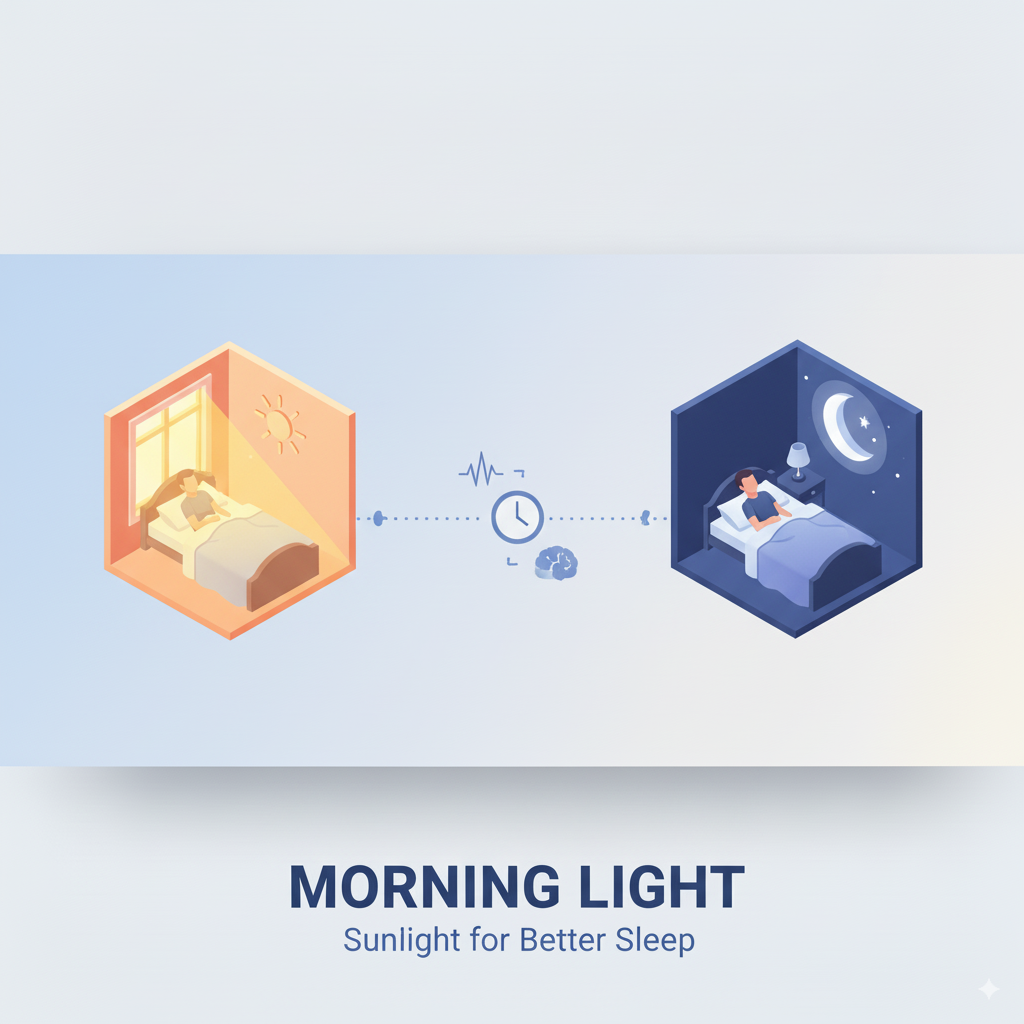Morning Light
Getting a good night's sleep begins in the morning. When you first wake up, it's important to spike your cortisol levels because it helps set your circadian rhythm. You want high cortisol levels in the morning to signal to your body that the day is starting and low cortisol levels at night to signal that the day is winding down. For those who don't know, cortisol is the body's stress hormone and it helps drive your alertness¹.
The Science Behind Morning Light
The effect of light on the morning cortisol peak in humans has been demonstrated in controlled studies, where light exposure resulted in approximately a 35% further increase in cortisol levels compared to darkness². Early morning transition from dim to bright light can suppress melatonin secretion, induce an immediate, greater than 50% elevation of cortisol levels, and limit the deterioration of alertness normally associated with overnight sleep deprivation³.
Natural daylight at high intensities as experienced outside buildings has been shown to advance the timing of sleep to earlier hours, affect the duration of sleep, and improve sleep quality⁷. Each additional hour spent outdoors has been found to advance sleep by approximately 30 minutes⁵.
How Much Light Do You Actually Need?
Studies of bright light therapy show that 15-30 minutes of exposure to daylight is enough to lift mood, improve concentration and aid our sleep⁷. The exact amount you need depends on conditions: Stanford neuroscientist Andrew Huberman recommends getting 5 to 10 minutes of sun exposure on a sunny morning (where illuminances can range from 25,000 to 100,000 lux)⁷, and 15 to 20 minutes on a cloudy day (typically around 1,000 to 10,000 lux)⁷. If you can't get access to natural light first thing in the morning, exposure to artificial light of 10,000 lux (or more) for 20-30 minutes will do. Therapeutic light boxes are designed at this intensity as they need to compensate for the dramatically lower brightness of indoor environments where standard office lighting provides only 150 to 1,000 lux⁷.
My Morning Light Protocol
The first thing that I do when I get up is go to the bathroom. Fortunately for me, our bathroom lights are very bright at full blast. If your bathroom lights aren't bright enough, there are 10,000 lux lamps available on Amazon that can provide therapeutic-level light exposure.
From there, I'll go do my cold plunge outdoors so I will get exposure to sunlight. About 30 minutes after my cold plunge, I'll take my dog for a walk. Between all of these activities, I receive enough light to spike my cortisol levels and set my circadian rhythm for the day.
The timing matters: morning sunlight exposure should happen within 30 to 60 minutes of waking for optimal circadian benefits⁶. Getting outside in the morning when the sun is between 10-30 degrees in the sky provides that crucial UVA light exposure that supports the production of critical hormones key for energy, mental health, sleep, and cell repair⁶.
What If You Can't Get Outside?
On dark mornings with inadequate light, turn on as many bright indoor lights as you can to mimic the effect. If you spend most of your time indoors during the day, situate yourself so you face the window and open the shades whenever possible. If your daytime room has no window, or just a small one, add more light with table lamps (1,500 lumens each) on each side of your computer with light-colored shades that diffuse the light.
For those dealing with persistent morning darkness, using a "dawn simulator" or "light therapy" lamp in the morning can deliver 10,000 lux of bright light—about five times the brightness of outside light on a very cloudy day.
Your body craves that morning light signal to properly calibrate your internal clock for the entire day. Getting it right in the morning sets you up for better energy, mood, and sleep quality; all from something as simple as stepping outside or positioning yourself near a bright window.
References:
Chapotot F, et al. Cortisol secretion is related to electroencephalographic alertness in human subjects during daytime wakefulness. J Clin Endocrinol Metab. 1998;83(12):4263-8. PMID: 9851761
Lewy AJ, et al. Light affects morning salivary cortisol in humans. Physiol Behav. 1999;67(4):613-7. PMID: 10487717
Zeitzer JM, et al. Transition from dim to bright light in the morning induces an immediate elevation of cortisol levels. J Clin Endocrinol Metab. 2001;86(1):151-7. PMID: 11232026
Reid KJ, et al. Timing and intensity of light correlate with body weight in adults. PLoS One. 2014;9(4):e92251. PMID: 24694994
Roenneberg T, et al. A marker for the end of adolescence. Curr Biol. 2004;14(24):R1038-9. PMID: 15620633
Begemann K, et al. Endocrine regulation of circadian rhythms. npj Biol Timing Sleep. 2025;2:10. doi: 10.1038/s44323-025-00024-6
Blume C, et al. Effects of light on human circadian rhythms, sleep and mood. Somnologie (Berl). 2019;23(3):147-156. PMID: 31534436

